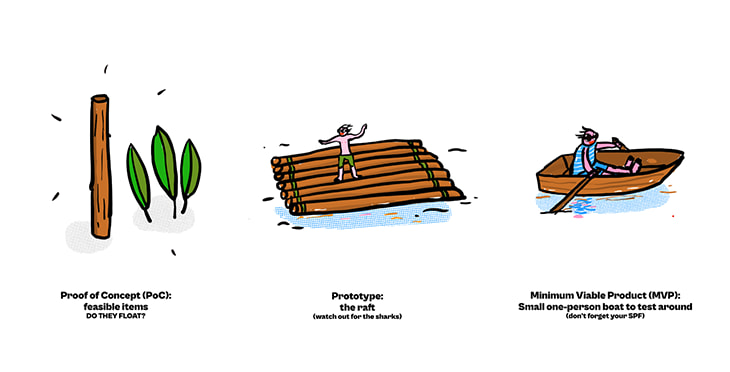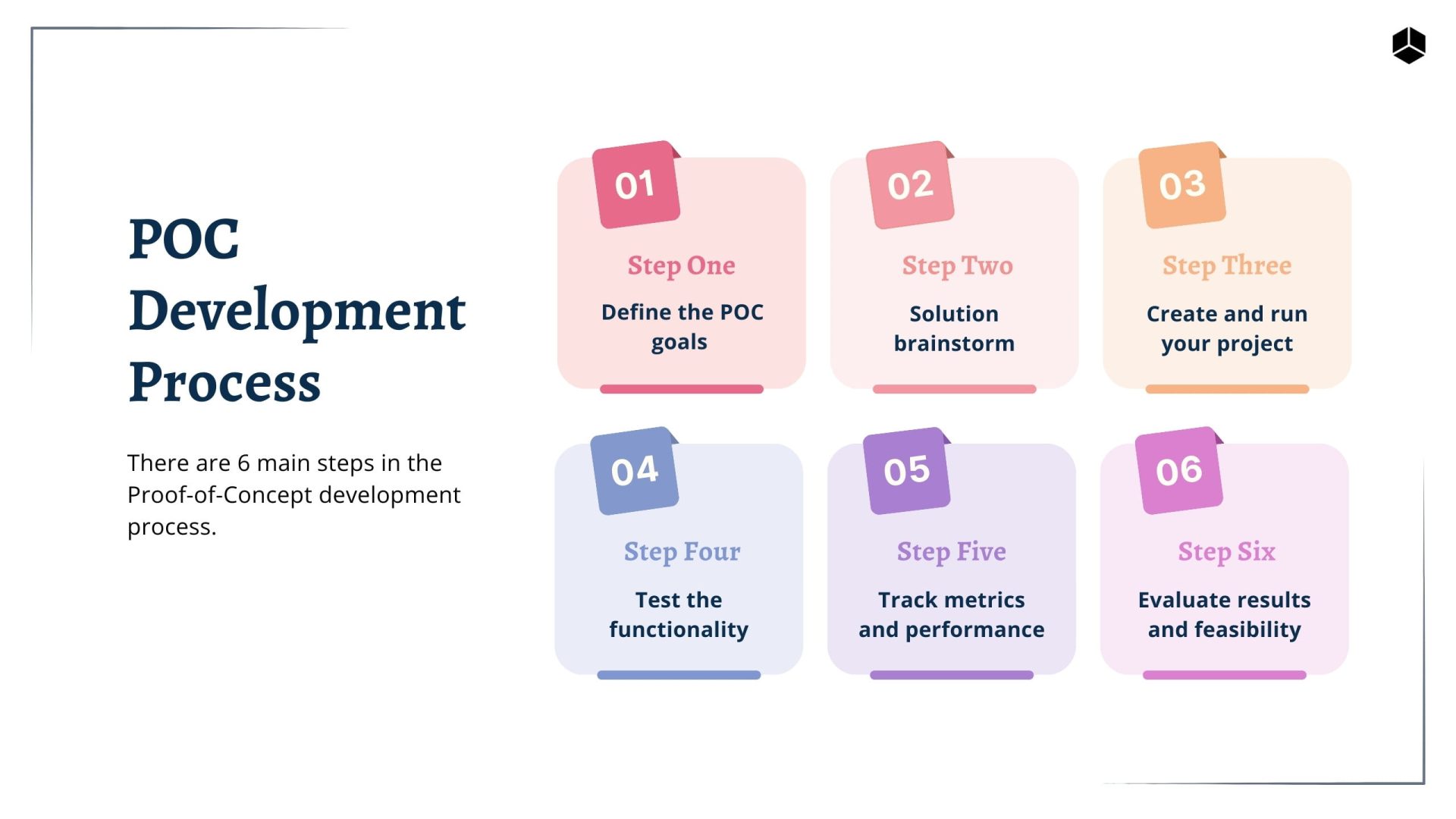To remain profitable and run a successful business, any company should constantly develop. However, development does not always go in the right direction, and heavy investments into knowingly unsuccessful ideas can pose high risks and even lead companies to bankruptcy altogether.
To avoid such risks, experts invented a special method of testing hypotheses called Proof of Concept (POC). It allows companies to check their ideas for viability in the shortest possible time and with a minimal budget.
What is Proof of Concept (POC), and Why is it Important?
Let us give a simple definition:
Proof of Concept is a pilot project that companies implement to verify the project idea or specific functions for feasibility and necessity.
This development phase is not mandatory, but by implementing it, companies can mitigate risks for the project and prevent investment loss.
A POC method does not imply a ready product, so businesses can implement the phase quickly and cheaply. A PoC phase usually lasts a week to several months.
Benefits of Using Proof of Concept in software development:
- Feasibility Assessment. A Proof of Concept (POC) allows software developers to assess the feasibility of their ideas and concepts before committing significant resources to full-scale development. It helps identify potential technical challenges, risks, and limitations early on.
- Risk mitigation. By building a POC, developers can identify and mitigate the risks associated with software development. It allows testing and validating assumptions, ensuring that the final product meets the desired requirements and expectations.
- Technical Validation. POCs help validate the technical aspects of a software solution, such as integration with existing systems, compatibility with different platforms or devices, and compliance with technical standards. It helps ensure that the proposed solution is technically feasible and can be successfully implemented.
- Cost-effective. POCs are typically smaller in size and scope than full-scale development projects. This makes them more cost-effective because they require less resources, time, and effort. They allow organizations to test the waters without causing significant financial commitments.
- Performance Evaluation. POCs provide an opportunity to evaluate the performance of a software solution in an actual or simulated environment. It helps identify performance bottlenecks, scalability issues, and potential optimizations early on, enabling developers to make informed decisions.
- Decision Support. POCs provide valuable insights and data that can support decision-making. By testing different approaches or technologies in a controlled environment, developers and stakeholders can make informed decisions about the best path forward.
- Market demand validation. A successful POC can serve as proof of market demand and potential profitability. It can be used to attract investors, secure funding, or justify further investment in full-scale development. It demonstrates that there is a market need and interest in the proposed software solution.

Looking for a reliable technology partner?
Accelerate your roadmap with our experienced dedicated software development team.
Contact usAnother important aspect of software development is writing a Statement of Work document. It is a business document used for project management purposes. Read more about statement of work software on DesignRush blog.
Proof of Concept vs. Prototype vs. MVP: What’s the Difference?
These three concepts are similar in many respects. Consequently, the difference between the three is not evident and may be obscure. In short, they differ as follows:
- A Proof of Concept aims to test the idea for viability or whether the hypothesis makes sense in principle.
- A Prototype shows what the idea implementation could look like in actual conditions. For example, using a prototype, you can visualize product appearance, its work logic, etc.
- An MVP (minimum viable product) is a fully-fledged product version with a set of specific functions ready to meet the target audience’s needs and provide developers with sufficient feedback for further product development.
Each of the listed methods is a component of product development and idea validation processes. The difference is at what phase it is used and how many resources it requires for implementation.

How to Write a Proof of Concept (Step-By-Step)
There are 6 main steps in the Proof-of-Concept development process:
- Define the POC goals (choose success metrics)
- Solution brainstorm
- Create functionality and run your POC project
- Test the functionality
- Track your metrics and performance goals.
- Evaluate software product results and feasibility.

Let’s discuss your project
Drop us your idea to know how the SmartTek developers team can help you with its tech implementation.
Contact usThe proof of concept example we developed – VR Proctoring Service – is designed to improve exam security, deter cheating, and provide a more immersive and controlled online testing environment.
When Do You Need a Proof of Concept?
Here are some basic scenarios where a proof of concept will become a reasonable practice:
- Launching a startup. Resorting to a POC, you will make sure you can implement your product from a technical point of view.
- Expanding the existing product’s functions. If you already have a working software system but want to extend its functionality, you can benefit from a POC too.
- New technology implementation. Before implementing a new technological solution, you have to make sure it is compatible with actual processes and systems to avoid issues.
Essentially, this implementation method resembles a trial run before investing hefty resources in launching a new product, service, or technology to the market.
Wrap Up
Having read this article to the end, you already comprehend that a Proof of Concept can become quite a beneficial phase if you want to validate an idea and develop a new software product. While making relatively small investments and spending little time, you can substantially mitigate possible risks and increase the probability of success.
You can contact us, and we will help you test your hypothesis and implement a turnkey project, whatever its complexity is. Contact us, and let us discuss the details.






 view the post
view the post
 view the post
view the post

